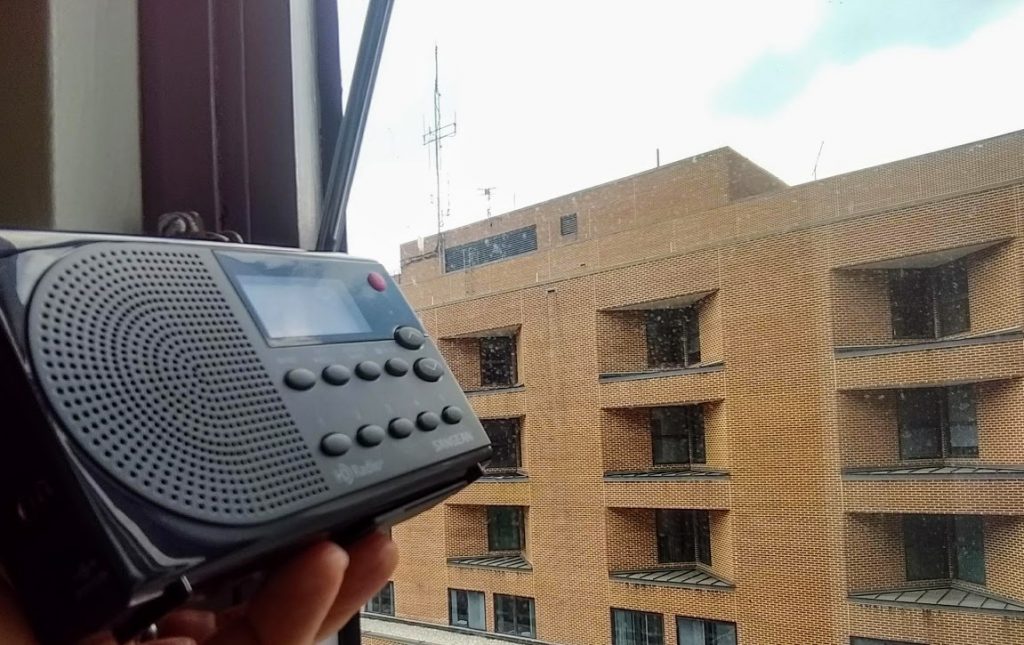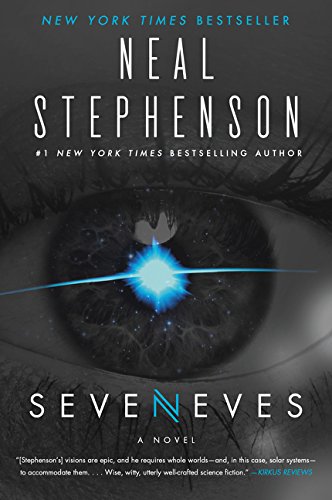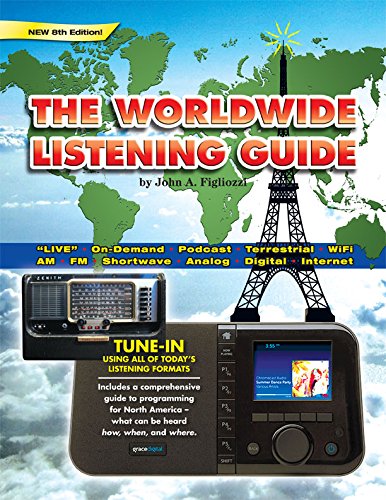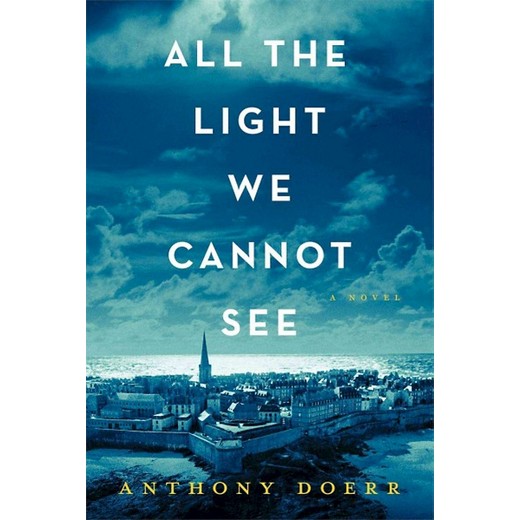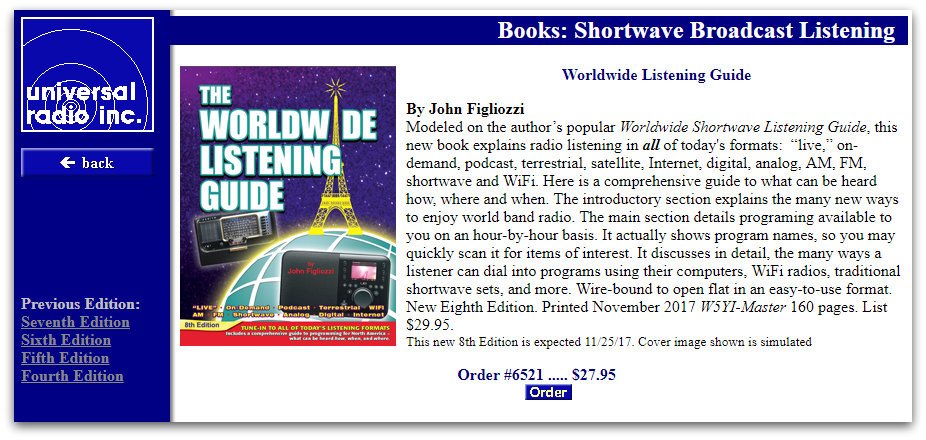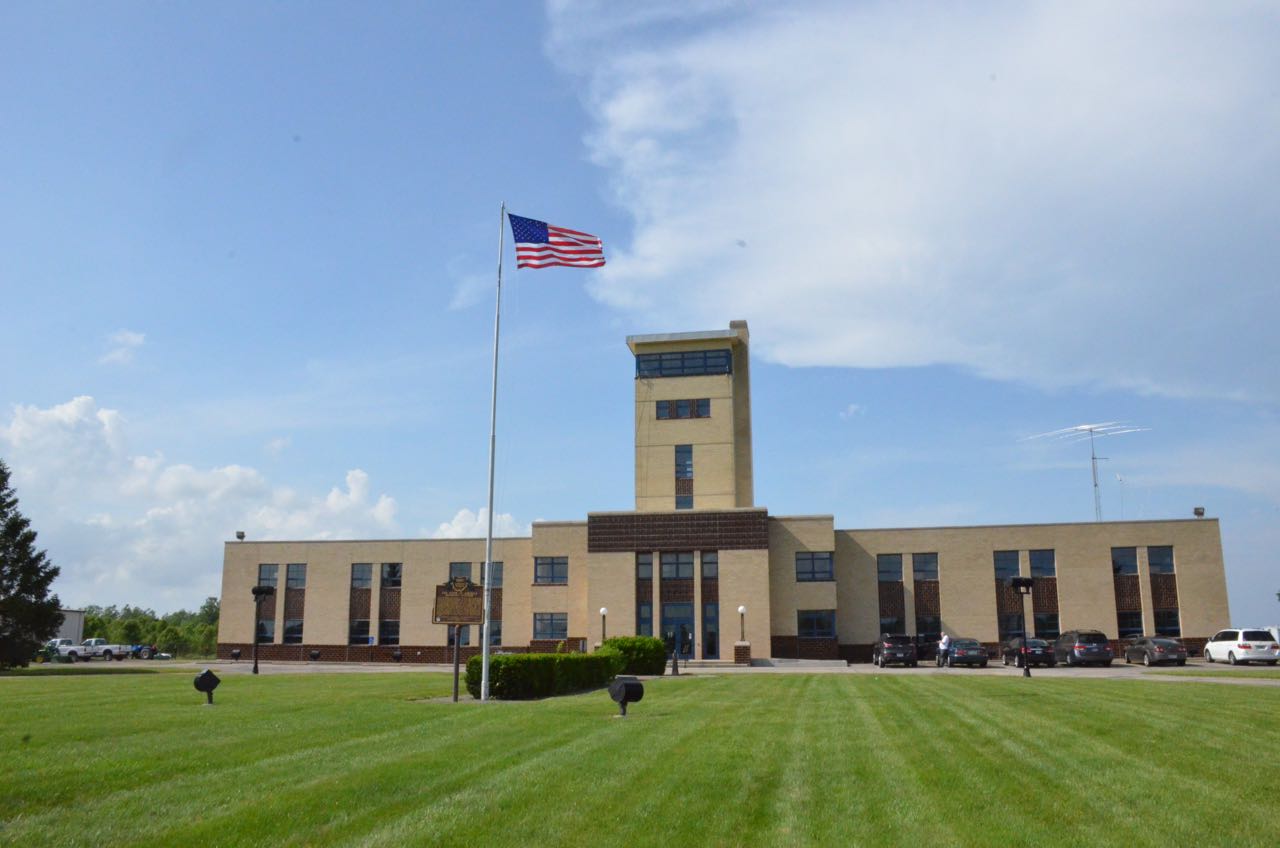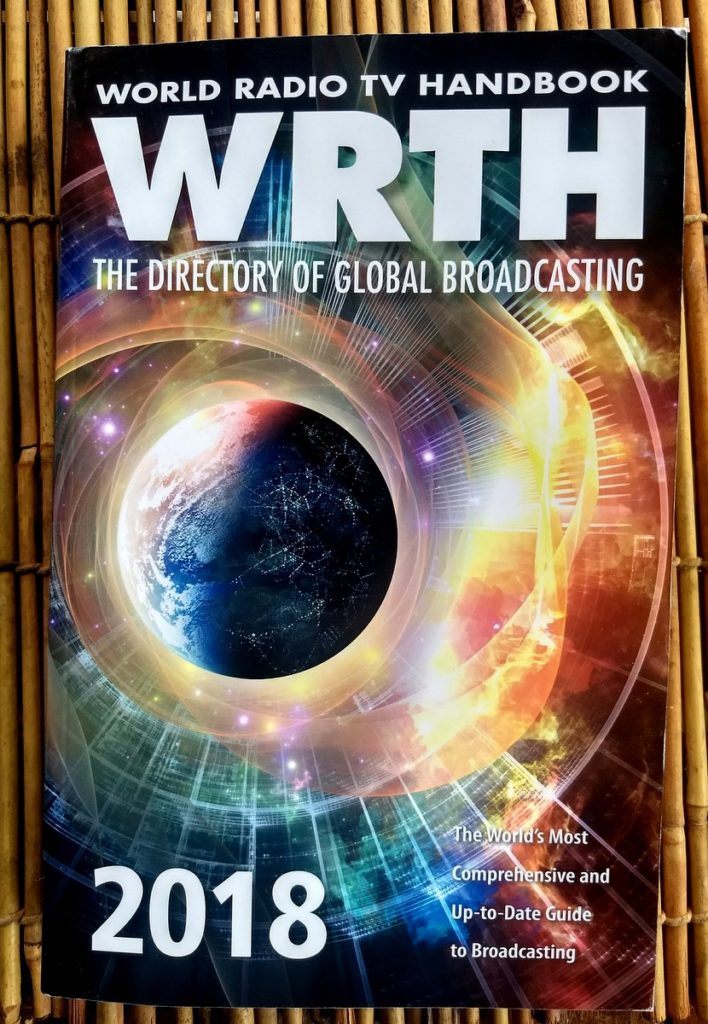 I received my copy of the 2018 World Radio and TV Handbook (WRTH) directly from the publisher yesterday, just prior to my Christmas holiday travels. As I mention every year, I look forward to receiving this excellent staple radio reference guide–and this is their 72nd edition!
I received my copy of the 2018 World Radio and TV Handbook (WRTH) directly from the publisher yesterday, just prior to my Christmas holiday travels. As I mention every year, I look forward to receiving this excellent staple radio reference guide–and this is their 72nd edition!
WRTH’s team of noted DXers from around the world curate frequencies and broadcaster information by region; while I’m not sure how they orchestrate all of this, the end result is truly a symphony of radio information. In addition to broadcaster listings, WRTH’s radio reviews, feature articles, and annual HF report make for excellent reading.
But the WRTH isn’t just a frequency guide: the publication always devotes the first sixty or so pages to articles relating to various aspects of the radio hobby. Following, I offer a quick overview of these.
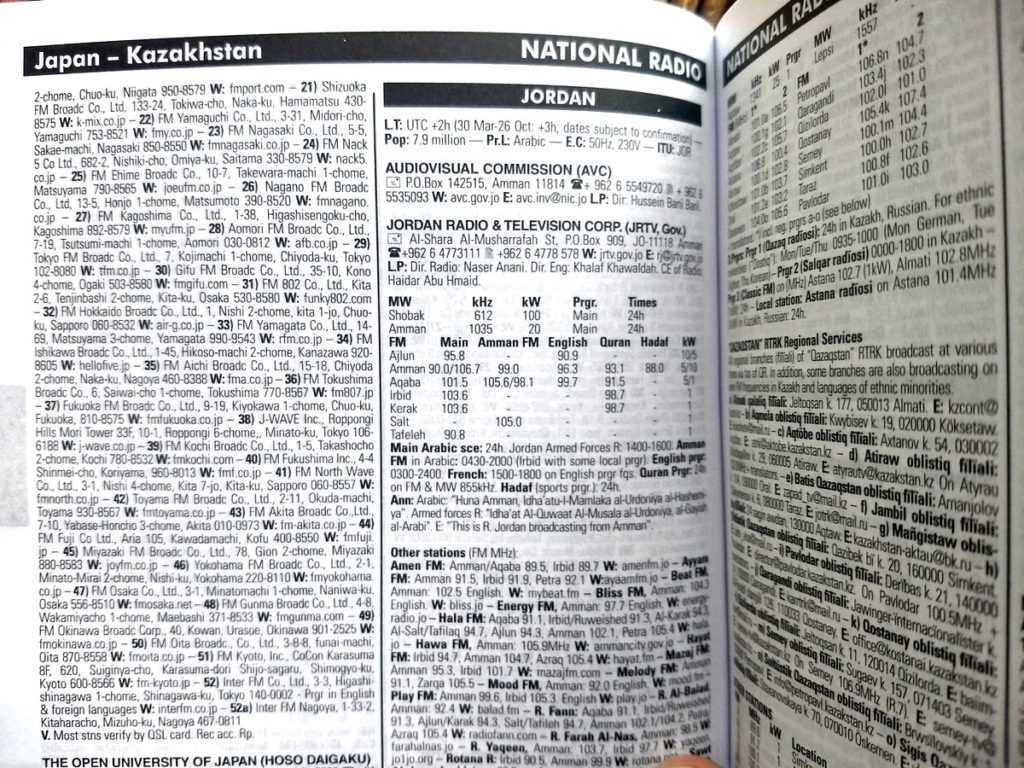
WRTH broadcast listings are incredibly thorough and informative
The first article always features a WRTH contributor: this year, they feature Torgeir Woxen who is the contributor for Norway and editor of the Asia & Pacific frequency list. Reading about how Woxen became interested in radio and DXing reminds me of how I–and many of my radio friends–got their start as well.
The second set of articles is always my favorite: WRTH receiver reviews.
This year, WRTH begins with a review of the Icom IC-R8600 wideband tabletop SDR receiver. They also review the Tecsun PL-880, Tecsun S-8800, Expert Electronics ColibriNano, SDRplay RSP2, and the new AOR AR-DV10 wideband handheld.

(Photo: Cross Country Wireless)
Besides radio reviews, WRTH also includes an evaluation of the Cross Country Wireless Active Loop.
I must admit: the Cross Country sounds like an effective and affordable portable mag loop antenna. I might need to grab one in the future to use on impromptu travels and DXpeditions.
The following article features WRTH contributor, Brian Clark, and his travels from New Zealand to the geographic antipodes of his home: Spain, Portugal and Morocco. Of course, enjoying diverse radio broadcasts was an integral part of his journey!
I was pleased to find that the following feature article, entitled Receiving Noise, explores the radio interference that plagues our hobby. The article mentions several common sources of noise and some of the antennas that most effectively mitigate RFI. Sadly, radio noise/interference is an important topic for most radio enthusiasts.
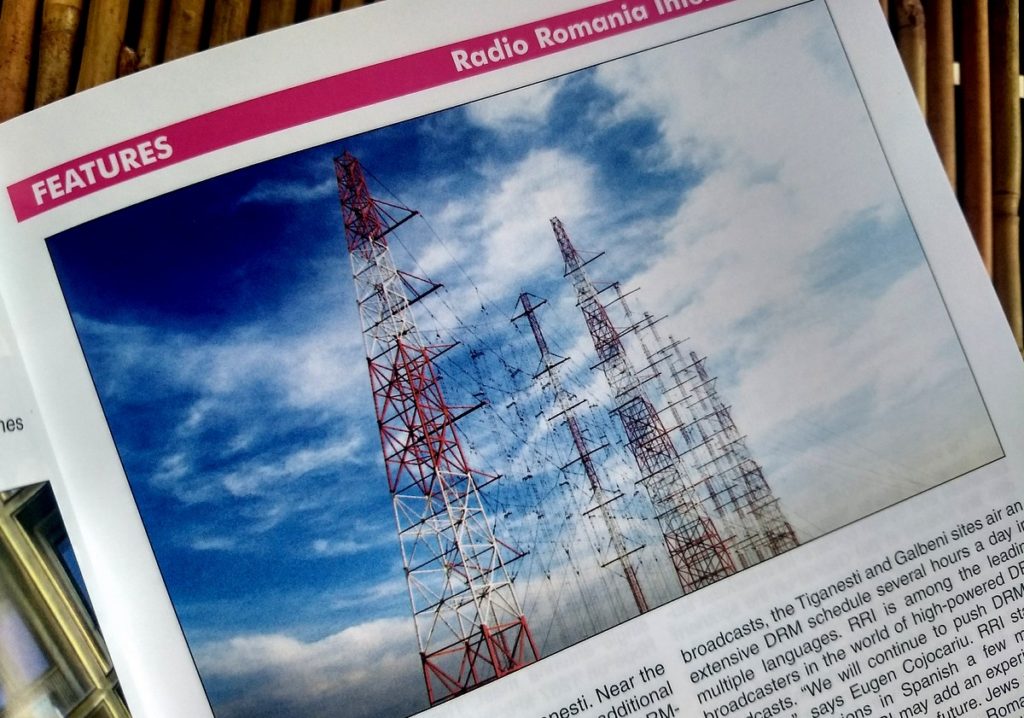
Following this, WRTH writer, Hans Johnson, features an article on Radio Romania International. RRI is one of my favorite shortwave broadcasters, so this was a treat to find indeed–Johnson’s piece sheds light on the past, present and future of the station.
Next, in A New Voice of Hope in the Middle East, Founder and President of the Strategic Communications Group, John Taylor, writes about setting up a new mediumwave station in Israel.
The following article features Dr. Martin Hadlaw, a former advisor to the Solomon Islands Broadcasting Corporation (SIBC), who explores the history of broadcasting in the South Seas.
Next, WRTH feature their Digital Update which assesses the state of digital broadcasting and–this year a special note about–Digital Radio Mondiale.
The final article–a tradition–is the WRTH HF propagation report/forecast by Ulf-Peter Hoppe. Always an informative read and this year he ends on a positive note despite the fact we’ve hit the solar rock-bottom!
The 72nd is another fantastic edition of the World Radio TV Handbook. As I say every year, I’ve never been disappointed with WRTH. Their publishing standards are such that the quality of their reviews, their writing, and (most importantly) their broadcast listings are simply unparalleled.
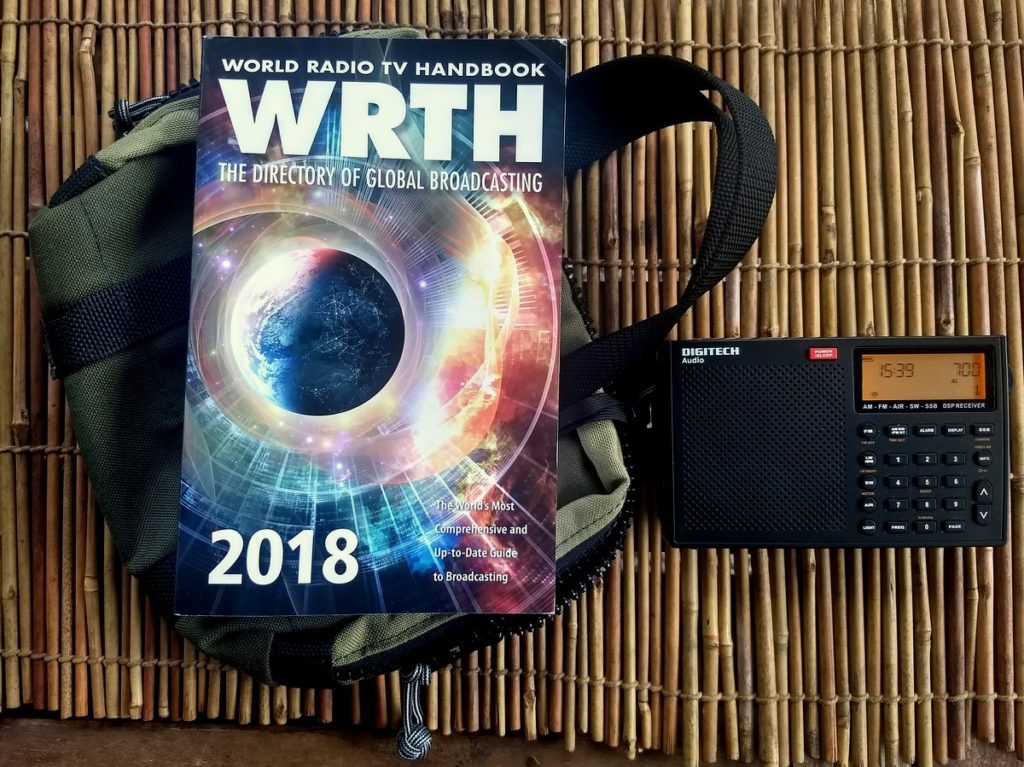
My WRTH 2018 and Digitech AR-1780 fit perfectly in my Red Oxx Lil Roy and are ready for holiday road travel and radio fun!
For DXers who collect QSL cards, you’ll find that broadcaster contact information in WRTH is often more up-to-date than a broadcaster’s own website. When readers contact me asking for QSL information from an obscure broadcaster, the first place I search is the current WRTH. Remember: their information is based on volunteer contributors who specialize in specific regions of the world–the most knowledgeable regional DXers keep this publication accurate.
Purchase your copy of WRTH 2018 directly from WRTH’s publishers, or from a distributor like Universal Radio (US) and Amazon.com (US), Radio HF (Canada), or BookDepository.com (International).
 Last night, while listening to jazz on FM, I finished reading All The Light We Cannot See by Anthony Doerr (affiliate link).
Last night, while listening to jazz on FM, I finished reading All The Light We Cannot See by Anthony Doerr (affiliate link).
